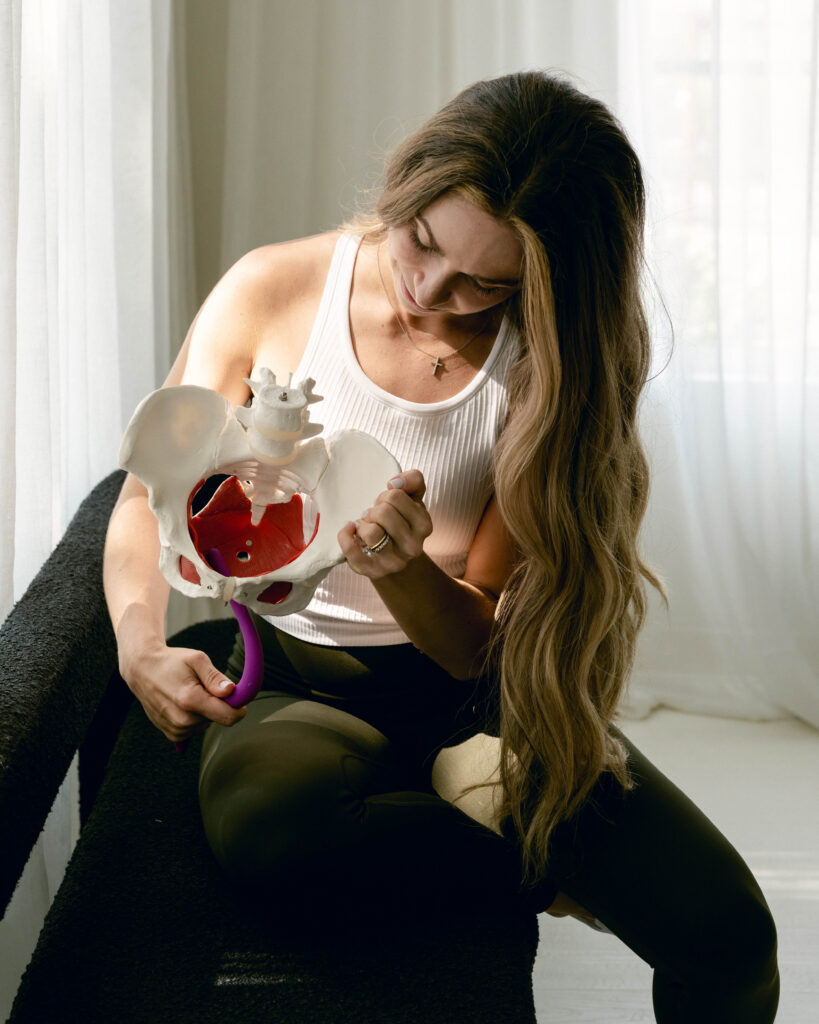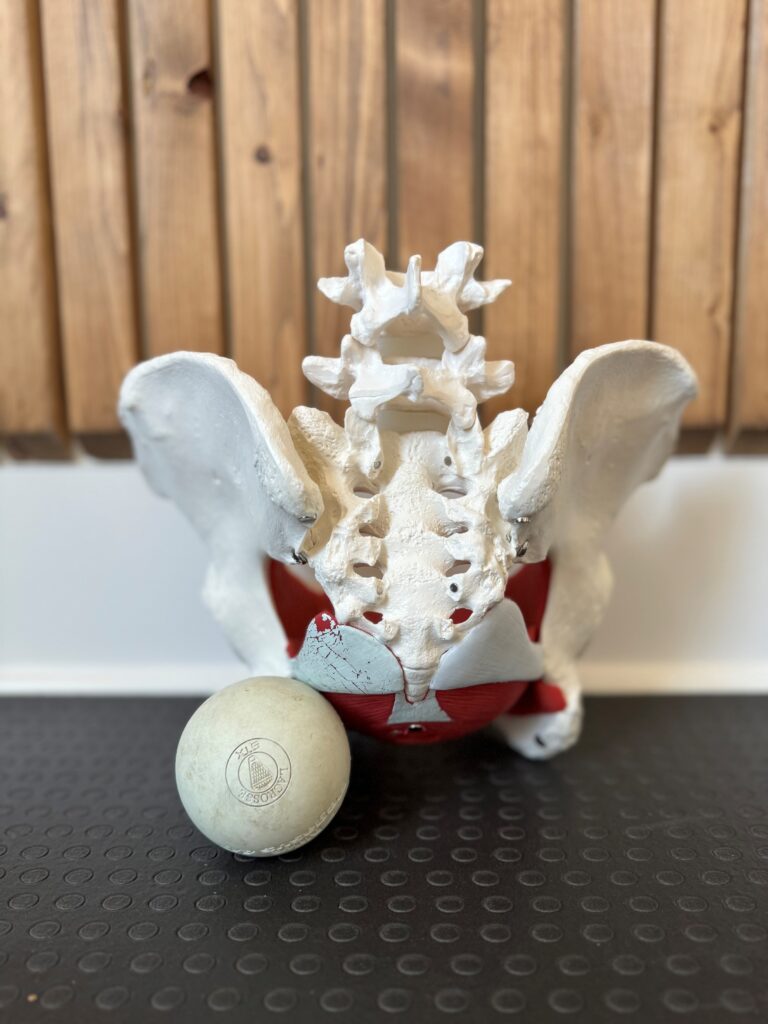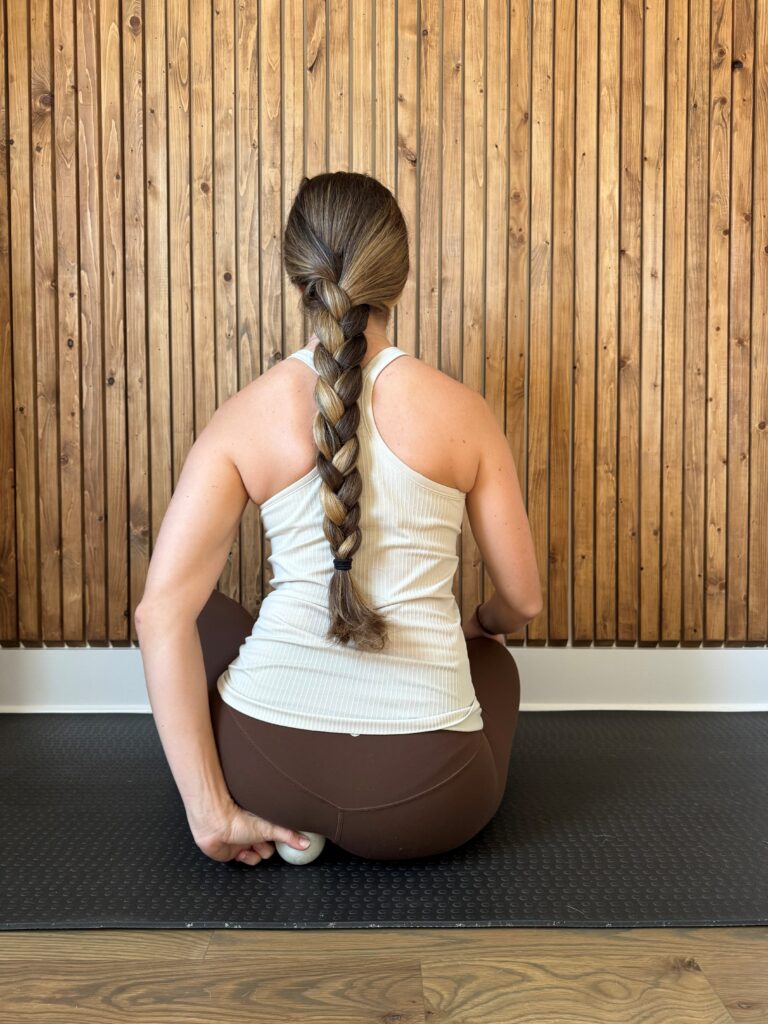Pain With Sex? Here Are 8 Tips to Alleviate Painful Intercourse

Disclosure: I only recommend products I would use myself and all opinions expressed here are our own. This post may contain affiliate links that at no additional cost to you, I may earn a small commission.
Postpartum women often experience pain with intercourse, a common concern that deserves thoughtful attention and care. In fact, up to 62% of women report experiencing pain with intercourse at 3 months postpartum – shocking right? My goal with this blog post, and as a pelvic floor physical therapist, is to provide you with a range of techniques and strategies to help you navigate and overcome discomfort during postpartum sex. Your postpartum journey is unique, and it’s essential to find the solutions that work best for you. Let’s delve into each aspect in more detail!
Why are you experiencing pain with intercourse?
Experiencing pain with intercourse postpartum is not uncommon, but that does not mean that you have to accept it as your “new normal” or just “part of being a female.”
Is it common? Yes. Is it normal? No.
There are various factors that can contribute to postpartum pain during or after sex (yes, I said after). Below, we’ll explore some of the most common causes I see as a pelvic floor physical therapist.
Trauma from Childbirth: The act of giving birth, whether vaginally or via cesarean section, can cause trauma to the pelvic floor muscles and the perineum. The most common type of trauma is perineal tearing though you can experience tearing around other structures of your vulva. This trauma may result in pain and discomfort during intercourse as the healing process takes time.
Hormonal Changes: Pregnancy and childbirth bring about significant hormonal fluctuations – I can attest to this firsthand, ha! After you deliver your baby your estrogen significantly decreases causing vaginal dryness leading to reduced lubrication, increased friction and increased discomfort. If you are breastfeeding, you may experience prolonged vaginal dryness due to the continued hormonal impact of breastfeeding on your pelvic floor.
Pelvic Floor Tension: The pelvic floor muscles, which play a vital role in sexual function, can become tense or overactive, contributing to pain during intercourse. This tension may be a result of the trauma of childbirth or the body’s natural response to stress and discomfort. If you find yourself clenching your jaw, shrugging your shoulders towards your neck or clenching your butt cheeks – you are likely experiencing pelvic floor tension as well!

Pro tip: If you are experiencing pelvic floor tension, my Movement Through Early Postpartum program includes weekly breathwork and mobility to relax your pelvic floor before starting each workout!
Scar Tissue: For women who underwent a cesarean section or experienced perineal tears during childbirth, scar tissue can form and potentially interfere with comfortable intercourse. Scar tissue may need time to soften and become more pliable which you can assist through cesarean and perineal scar massage.
Vaginal Dryness: While hormonal fluctuations, breastfeeding, and the physical strain of childbirth are some of the most common reasons for vaginal dryness, there are plenty of other potential causes including: menopause, contraceptives, antidepressants, hysterectomy, cancer treatments, and the use of soaps in and around your vagina. Reduced lubrication can result in painful friction during intercourse as well as pain during initial penetration.
Emotional Factors: The emotional and psychological aspects of postpartum life cannot be ignored as they also play a significant role. Stress, anxiety, and the challenges of adjusting to motherhood can affect your level of arousal and overall comfort during intimacy which is why implementing methods to address your stress is key for painful intercourse.
Pelvic Organ Prolapse: In some cases, childbirth can lead to pelvic organ prolapse, where your pelvic organs, such as the bladder or uterus, descend into the outer wall of your vaginal canal causing a bulge in your vaginal canal. This may cause increased pain or discomfort during penetration.

Pro tip: Standing or upright positions may cause more pain due to the effects of gravity on your pelvic organs. Try a missionary position with your hips elevated by a few pillows for relief!
What can you do about it?
Work with a pelvic floor physical therapist
My first recommendation for any type of pelvic floor dysfunction is always going to be to work with a pelvic floor physical therapist. You can use this directory to search for one in your area and learn more about what to expect at your first visit in this article.
However, I understand it is not always accessible or affordable to work one-on-one with a pelvic floor physical therapist, which is why I spend hours upon hours creating these free blog posts with helpful resources as well as creating my online pelvic floor programs that you can perform at home!
Internal Pelvic Floor Release
Your pelvic floor muscles wrap around your vaginal opening and if they become too tight or overactive, then it is common to experience pain with intercourse as well as other symptoms such as urinary incontinence or tailbone pain.
The use of a pelvic wand to release trigger points or tension in your pelvic floor muscles is extremely helpful and effective when done appropriately, especially if your tension is within the deeper layers of your pelvic floor muscles. Use my code DRMAE to get $5 off of my favorite pelvic wand by Intimate Rose. If you don’t care about the discount you can also purchase it via Amazon.
Here are my tips for using a pelvic wand:
- Before use, make sure to sterilize the wand and apply a water-based lubricant. You can use a silicone-based lubricant if your wand is not made of silicone, otherwise avoid silicone on silicone as this can cause damage to your wand.
- Lie in a comfortable position where you can relax. You may find you need to prop yourself up with pillows or use pillows to support your legs for full relaxation.
- Slowly insert the wand and apply gentle pressure into your points of tension as you take big diaphragmatic breaths focusing on relaxing into the gentle pressure.


Please consult with a healthcare provider or pelvic floor therapist for further guidance, as improper use can lead to further discomfort.
External Pelvic Floor Release
If the idea of internally releasing your pelvic floor musculature does not sit well with you or is causing discomfort, then there are plenty of external release options you can perform!
One of my favorite ways to release the pelvic floor musculature externally is with the use of a lacrosse ball. In a seated position place the lacrosse ball on the inside of your sitz bones or wherever you feel tension, and then take big diaphragmatic breaths during your breath down into the ball. You can also choose to use a tennis ball if a lacrosse ball is too much pressure.
Downtraining Your Pelvic Floor
Downtraining your pelvic floor involves learning to consciously relax these muscles, rather than tensing them which can contribute to painful sex. Incorporate deep diaphragmatic breathing into your daily routine, especially prior to intercourse, to help release pelvic floor tension. Visualize your pelvic floor lengthening like a trampoline as you inhale through your nose expanding your ribcage 360 degrees. Exhale and simply blow out the air relaxing your body.

Pro tip: Both my Movement Through Early Postpartum and Movement Through Pregnancy programs incorporate downtraining at the beginning and end of every single workout to reduce any tension that may have developed during the workout or just through your daily life.
Add Lubrication
Did you know that you have two, pea-sized glands just on the inside of your vaginal opening called Bartholin glands? The role of your Bartholin glands is to secrete fluid that lubricates your vaginal opening. During arousal, these glands increase their fluid secretion, but sometimes this is not enough or there are other factors impacting their function. Lubrication is a key element in reducing friction and discomfort during intercourse, so you might need to add some of your own!
Here’s a quick breakdown of different lubricants:
- Silicone-based lubricants provide long-lasting lubrication but should not be used with silicone-based toys, as they can cause damage to the toys. I personally recommend UberLube as your go-to silicone-based lubricant.
- Water-based lubricants are less messy but may require reapplication. They can be used with condoms and sex toys. I use Slippery Stuff in the clinic with patients for internal exams as it is super gentle.
- Oil-based lubricants are longer lasting than water-based, but they can be messy and stain your sheets. They can also break down latex-based condoms, toys and diaphragms.

Pro tip: Always select lubricants free from harsh chemicals to prevent any irritations or allergies.
Improve Your Pelvic and Hip Mobility
It is tight real estate (no pun intended) in your pelvis and often tension in your hips can cause tension in your pelvic floor – and vice versa. Incorporating hip and pelvic mobility drills such as happy baby and child’s pose will help to release tension throughout all of the muscles in your pelvic girdle allowing for easier penetration.
Improve vulvar hydration
Up to 60% of the adult human body is made of water, so it makes sense that if you are dehydrated then your vaginal tissues may also be dehydrated. Aim to drink one 8 ounce glass of water per waking hour for optimal hydration. You might need even more if you are breastfeeding or exercising.
You might also consider using a vulvar balm (use code drmae15) improve hydration – think of it as chapstick, but for your vulva!
Increase Foreplay
A lack of arousal will lead to decreased internal vaginal lubrication which is why foreplay is so important! Extended foreplay can enhance your arousal to help relax your body and improve the secretion of fluid from your Bartholin glands. Don’t be shy in communicating openly with your partner about your needs and preferences, especially if you are newly postpartum and still figuring out what your body needs. Aim for about 20 minutes of foreplay to allow for sexual arousal.
Wait Longer Than 6 Weeks Postpartum
If your partner has been eagerly awaiting your 6 week appointment to receive “clearance” then they might need to think again! While the traditional 6-week postpartum period is a general guideline for allowing your stitches to heal, it does not always mean you are physically or mentally ready for intercourse. Waiting longer than six weeks before resuming intercourse can provide your body with more time to heal, recover, and adjust. Note that this will vary across all women with some waiting 6 weeks and others waiting 12 weeks. If you are experiencing increased anxiety or feel tense at just the thought of intercourse, then the chances of you experiencing pain during intercourse are higher due to a decreased ability to relax and release tension.
Prioritize Your Pelvic Health
Remember, pain with intercours is common, but it is not normal. You deserve to have non-painful sex, and I want to help you achieve that by investing in your pelvic health postpartum.
My Movement Through Early Postpartum includes 12 levels of rehab and fitness workouts that you can begin week 1 postpartum to release tension and reconnect with your body as well as over 45 educational modules walking you through how to troubleshoot common pain points such as painful intercourse, prolapse, tailbone pain, low back pain and so much more!